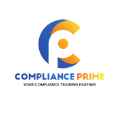The office is a place where employees from different departments come together with a shared goal: driving the company forward. Each department functions like a gear in a well-oiled engine, contributing to the company’s ability to provide services, sell products, and operate efficiently. The performance of this “engine” depends on a combination of factors, including a positive working environment and the guidance of top management. When these factors align, employees feel motivated, productive, and valued.
However, certain behaviors can disrupt this balance. One significant issue is substance abuse at work, such as employees coming to work under the influence of drugs or alcohol. This not only affects the individual’s performance but can also impact their team and the broader office environment. Employees who are high may engage in disruptive behavior, make poor decisions, or create conflicts, all of which can harm other employees and lower overall morale. Such behavior sets a dangerous precedent and must be addressed promptly and effectively.



Actions Employers Can Take if a Worker Is High at Work
When an employer or HR identifies that an employee is high at work, there are several steps they can take to address the situation:
1. Immediate Response:
- Remove the employee from the workplace safely: Ensure the individual does not continue working in a state that could be unsafe for themselves or others.
- Ensure safety of others: If the employee operates machinery, drives as part of their job, or handles sensitive tasks, take immediate action to prevent accidents.
2. Documentation:
- Record observations: Note any unusual behavior, physical signs, or performance issues observed.
- Gather evidence if necessary: This can include witness statements, video evidence (if workplace policy allows), or work performance records.
3. Private Meeting:
- Speak confidentially with the employee: Discuss observed behavior calmly, without making assumptions.
- Allow explanation: Sometimes personal issues, medications, or other circumstances can mimic intoxication.
4. Disciplinary Actions:
Depending on company policy and severity, actions may include:
- Verbal or written warnings: For minor incidents or first-time occurrences.
- Suspension: Temporary leave from work to address serious issues.
- Mandatory counseling or rehabilitation programs: Support for employees struggling with substance abuse.
- Termination: In cases of repeated violations or severe incidents, dismissal may be necessary to maintain workplace safety and integrity.
5. Referral to Employee Assistance Programs (EAP):
- If available, encourage employees to access professional help for substance abuse.
- Offering resources shows the company supports employee well-being while maintaining accountability.
Preventive Measures to Avoid Future Incidents
Prevention is always better than remediation. Employers can take several steps to reduce the likelihood of employees coming to work high:
- Clear Policies: Implement and communicate a comprehensive substance abuse policy outlining prohibited behaviors, consequences, and available support.
- Education and Training: Conduct workshops or training sessions on the effects of substance abuse and maintaining a safe workplace.
- Regular Monitoring: Use performance reviews, random safety checks (if applicable), or wellness check-ins to spot potential issues early.
- Promote a Positive Work Environment: Stress, dissatisfaction, or toxic work culture can contribute to substance use. Foster support, recognition, and open communication to reduce risk factors.
- Support Programs: Offer confidential counseling, mental health resources, or wellness programs to help employees manage stress and personal challenges.
To gain deeper insights into workplace compliance, employee relations, and HR best practices, explore our Human Resources Webinars and stay ahead of evolving employment laws.
Conclusion
Substance abuse in the workplace is a serious issue that can harm employees, teams, and the overall work environment. Employers must act decisively when a worker comes to work high, ensuring safety, documenting incidents, applying appropriate disciplinary measures, and offering support when possible.
At the same time, preventive strategies, clear policies, education, supportive programs, and a positive work culture, can significantly reduce the chances of recurrence. By addressing incidents thoughtfully and proactively, companies can maintain a safe, productive, and professional workplace for everyone.


